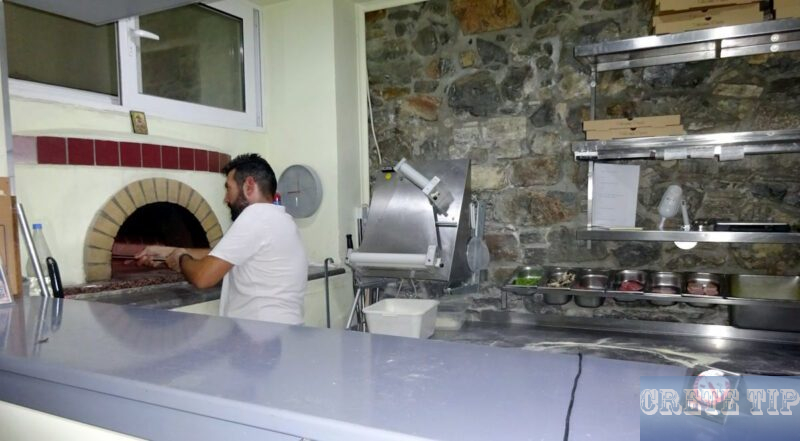How 131,491 Greek jobs were lost in October – 30,846 of them in Crete.

How 131,491 Greek jobs were lost in October
Table of Contents
Drop in Full-Time Employment Contracts
In October, there was a notable decrease in full-time employment contracts, continuing the trend observed in September. This decline raises concerns for many in the labour market. The shift towards more flexible working arrangements has become increasingly evident, indicating a change in how employers are structuring their workforce.
The challenges faced by sectors such as tourism and hospitality have significantly affected job stability. With the conclusion of the tourist season, many businesses have opted for flexible contracts, which are often less secure than full-time roles. This situation has led to increased job losses within these industries, with a total of 131,491 positions lost across various sectors.
Employment Landscape and Job Losses
The employment landscape shows a difficult picture where job losses have outweighed job gains. In October, the record details from the Ergani system revealed that job losses surpassed new hires, leading to a concerning employment balance.
The tourism and hospitality sectors alone lost around 133,300 jobs, contributing to the overall negative trend. The majority of these losses were seen in accommodation services, followed by the food and beverage sector. The significant number of redundancies has prompted worries about the sustainability of job positions in these fields, especially as they heavily rely on seasonal employment.
Job Creation Amidst Declines
Despite the negative figures for full-time jobs, there were areas where new positions emerged. The education sector stood out by creating over 23,000 new jobs, mainly due to the start of the academic year. This indicates a potential stabilisation point within specific industries that may remain insulated from the broader job losses.
However, the stark contrast between these gains and the losses in other sectors highlights the uneven nature of job creation. While some areas flourish, others, notably those reliant on seasonal tourism, face significant challenges.
Three-Year Trend of Job Losses
The trend of job losses has persisted for three consecutive years during the same month. This pattern raises alarms, particularly as records show 131,496 job losses in October 2023 and 115,856 job losses in October 2022. These recurring figures suggest a systemic issue rather than isolated incidents.
Understanding this trend requires a deeper look into employment practices over these years. Companies are increasingly managing operational costs by adjusting their workforce. The contrast between overall employment rates and the actual security provided by these jobs shows an ongoing shift in the market.
Seasonal Employment Dynamics
October is traditionally a month marked by a negative balance of recruitment and layoffs, primarily due to the end of the summer tourism period. This annual cycle affects job security, particularly for those in sectors highly influenced by tourism.
Certain activities, such as accommodation and food services, accounted for the highest number of job losses. The impacts of this seasonal employment model suggest vulnerabilities within these roles, inherently linked to fluctuating demand across the year.
As such, the employment balance, which consists of the ratio of hires to separations, indicates a pressing need for a strategy to mitigate these recurring losses. Addressing these vulnerabilities may require adaptations in both policy and business practices to provide more stable employment opportunities moving forward.
Future Outlook for Employment Contracts
Looking ahead, the outlook for full-time employment contracts remains uncertain. The shift toward more flexible forms of work may continue to dominate discussions about job security.
As more businesses adapt to flexible employment structures, it is imperative for stakeholders—including employers, employees, and policymakers—to explore ways to enhance job security while also fulfilling operational needs. Creating a sustainable framework that balances flexibility with stability could play a crucial role in shaping the future of the workforce.
This complex interplay between full-time and flexible work arrangements will likely be a pivotal theme in the ongoing conversation surrounding the labour market. Monitoring these trends will be vital for understanding shifts in employment practices and their associated impacts on job security.
Frequently Asked Questions
What were the main reasons for the job losses in October?
Various factors contributed to the significant job losses in October. The end of the tourist season played a major role, impacting many positions that relied on seasonal employment. Additionally, economic fluctuations and reduced consumer spending affected various industries, leading to layoffs.
Which industries experienced the greatest job declines during that time?
The tourism sector faced the most substantial job cuts, particularly in popular destinations. Other affected areas included hospitality, retail, and certain regional markets such as the Ionian Islands and Crete, where the impact was particularly pronounced.
How do the job figures from October stack up against earlier months?
The October figures indicated a sharp decline compared to previous months. For example, job losses in October were significantly higher than those recorded in September and August, suggesting a trend of increasing unemployment as the year drew to a close.
What actions are being taken to counteract the steep fall in employment?
In response to the job losses, various initiatives are being introduced to stimulate job creation. These include government support for affected industries, retraining programmes for workers, and incentives for businesses to hire new employees.
How is the job market expected to bounce back after the October losses?
Analysts suggest that recovery could take time, depending on factors such as economic stability and the reinstatement of seasonal jobs. Encouraging signs may emerge with new tourism prospects and increased consumer confidence, which could gradually lead to job creation.
What steps is the government taking in light of the October employment statistics?
The government has acknowledged the severity of the job losses and is implementing policies aimed at economic recovery. These efforts include fiscal measures to support small and medium enterprises, as well as investments in sectors with growth potential to foster job creation.



